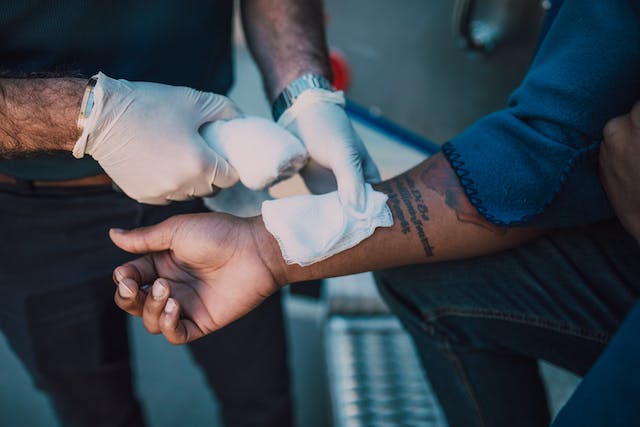Kinesio tape is an elastic tape used for various purposes, such as reducing pain and supporting muscles and joints. Do you want to buy kinesio tape? Go to this page. This tape is also often used by physiotherapists and athletes to treat or prevent injuries. However, you can also apply kinesio tape yourself. Read in this article how to apply this medical tape.
What can you use kinesio tape for?
Kinesio tape is made of cotton and is elastic. This causes the tape to lift the skin from the tissues beneath the skin, as it were. This causes compression or decompression of, for example, the muscles, which leads to a change in the pain signals that go to the brain. Medical tape helps, among other things, reduce pain and discomfort caused by injuries, muscle pain or inflammation. It can also be used to support muscles and joints, which is especially useful in case of overload, strains or instability. It is often also used preventively to prevent injuries.
When should you not use this tape?
There are certain situations in which kinesio tape should not be used. This includes conditions such as:
- Thin skin
- Skin conditions
- Open wounds. Do you want to treat an open wound? Read here how to approach this.
- Active cancers
- Burns
How should you apply kinesio tape?
Correctly applying kinesio tape is important to achieve the desired results. How to do this correctly depends partly on where you have an injury. Read here how to tape a wrist. In general, the skin where the medical tape is applied must be clean and dry. Below we will discuss some common injuries.
Apply kinesio tape to your lower back yourself
Start cutting the tape. Make three pieces, 15, 19 and 23 centimeters. The edges must be cut round. Then sit in a relaxed manner. Take the smallest strip and tape it to the center of your lower back just above where your butt ends. Now take the 19 centimeter piece of tape and stick it horizontally over half of the previous piece of tape. Finally, apply the largest piece of tape. Place this horizontally over half of the second tape.

Tape your shin yourself
If you need to tape your shin yourself, you should start by measuring how big your first piece of tape should be. Hold the tape along the inside of your leg in a stretched position. Take the bottom of your heel as a starting point, up to a hand's width below your knee. Also cut two pieces of 15 centimeters and cut them the last 5 centimeters, so that a V-shape is created. Make sure to cut all pieces round. Take the large, measured piece of tape and apply it perpendicular to your heel. The tape points to the inside of the leg. Place the tape along the line from heel to shin. Now grab one of the smaller pieces of tape. Place the center of this piece of tape exactly one centimeter beyond that annoying pain spot, seen from the calf. The second 15-inch piece of tape is applied in an identical manner just above the first.
The different cutting shapes and colors
Kinesio tape is available in different colors. The operation and production are the same, but the duration of the tape on someone's skin can differ per person. In general, you can say that if you have an injury that requires cooling, a blue or beige color should be chosen. A bright color is more suitable for muscle activation. There are also several cutting shapes for kinesio tape, such as:
- I-tape
- Y-tape
- X tape
- Octopus tape
How long can kinesio tape remain in place?
It depends a bit on which shape and technique you used to apply the tape, but on average the medical tape stays in place for about 4 to 10 days. You can do anything with the tape around your injury. From exercising to showering and even swimming; everything is possible with the kinesio tape. Depending on your injury and its severity, you may tape your injury several times. Some people use it for a certain period of time, while others are taped for certain actions that irritate the injured muscle or joint.



